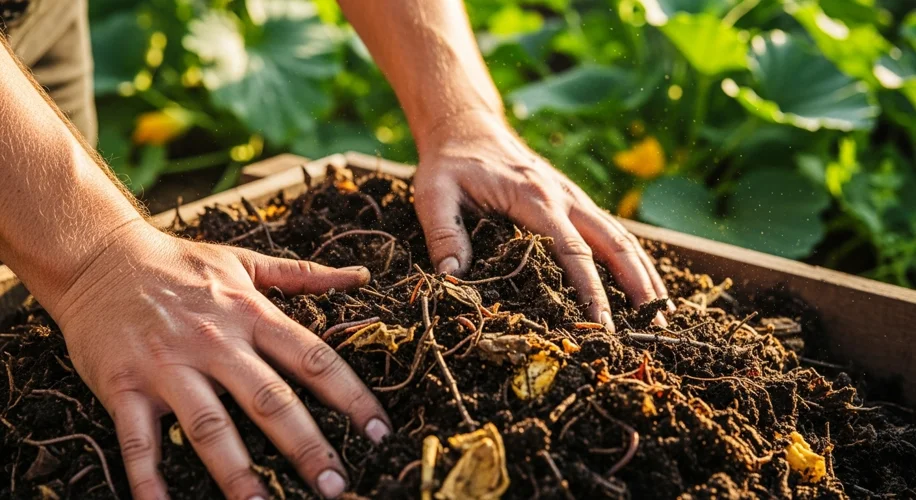Hey everyone, Elias here!
If you’ve been following along, you know how much I love getting my hands dirty in the garden. This year, like most years, my backyard is bursting with life, and a lot of that success comes down to something surprisingly simple: healthy soil. And guess what’s one of the best ways to build that healthy soil? You guessed it – composting!
Why Soil Health Matters
Think of soil as the pantry for your plants. If the pantry is empty or full of junk, your plants won’t thrive. Healthy soil is alive! It’s packed with beneficial microorganisms, earthworms, and nutrients that plants need to grow strong, resist pests and diseases, and produce delicious food. It also holds water better and improves drainage. It’s the foundation of everything in the garden.
Composting: Nature’s Recycling Program
Composting is basically speeding up nature’s process of breaking down organic materials. Instead of letting your kitchen scraps and yard waste decompose slowly in a landfill, you can turn them into a nutrient-rich amendment for your garden. It’s a fantastic way to reduce waste and create something incredibly valuable.
What Can You Compost?
It’s easier than you might think! Generally, you want a good mix of “greens” (nitrogen-rich materials) and “browns” (carbon-rich materials).
- Greens: Fruit and vegetable scraps, coffee grounds, tea bags, grass clippings, plant trimmings.
- Browns: Dry leaves, shredded newspaper or cardboard (avoid glossy paper), straw, small twigs, sawdust.
What to Avoid:
- Meat, dairy, and oily foods (they can attract pests and create odors).
- Diseased plants (you don’t want to spread issues).
- Weeds that have gone to seed (unless your compost gets very hot).
- Pet waste from carnivores.
Getting Started: Simple Techniques
There are many ways to compost, from simple piles to enclosed bins.
- The Pile: The most basic method. Just start layering your greens and browns in a designated spot. Turn it occasionally with a pitchfork to help it aerate and break down faster.
- The Bin: You can buy or build a bin. These help contain the compost and can make turning easier. Many people use tumblers, which make mixing a breeze.
- Worm Composting (Vermicomposting): This is great for smaller spaces or for processing kitchen scraps quickly. Red wiggler worms do the work, creating a rich compost called castings.
Tips for Success:
- Balance Greens and Browns: Aim for roughly a 2:1 or 3:1 ratio of browns to greens by volume. Too much green can make it slimy; too much brown can slow decomposition.
- Moisture: Your compost pile should be as damp as a wrung-out sponge. Too dry? Add some water. Too wet? Add more browns.
- Aeration: Oxygen is crucial. Turning your compost pile regularly (every week or two) helps speed things up and prevents foul odors.
- Particle Size: Smaller pieces break down faster. Chop up larger scraps.
The Reward: Black Gold
When your compost is ready, it will look and smell like dark, rich earth. It won’t have recognizable food scraps. You can mix it into your garden beds, use it as a top dressing, or add it to potting mixes. Your plants will thank you with vibrant growth and bountiful harvests. It truly is magic for the garden!

